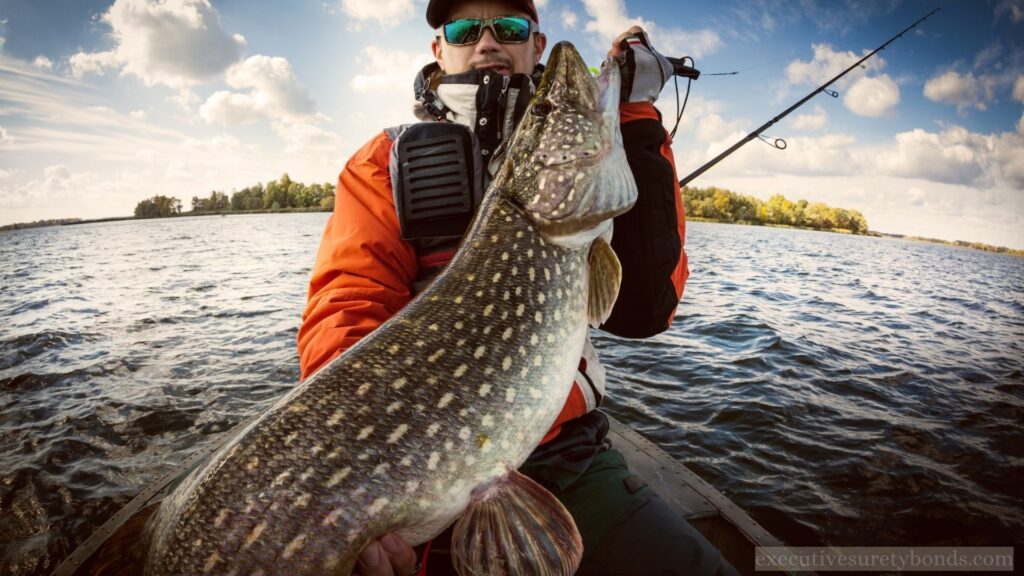Get An Instant Quote on Oklahoma Commercial Mussel Dealer $5,000 Bond Now
Introduction
In the heartland of America, where the Great Plains stretch as far as the eye can see, lies a state that boasts a rich tapestry of traditions and industries. Oklahoma, often dubbed the “Sooner State,” is home to a diverse range of economic activities, one of which might pique your curiosity—the enigmatic world of commercial shad dippers and their $1,000 bond. As unusual as it may sound, this financial instrument plays a vital role in regulating an age-old practice that has deep ties to the state’s culture and economy. In this article, we delve into the fascinating world of the Oklahoma Commercial Shad Dippers $1,000 Bond, unraveling its purpose, history, and significance.
The Art of Shad Dipping
Before we explore the bond itself, it’s essential to understand the unique trade that it regulates—shad dipping. Shad, a species of fish found in Oklahoma’s waterways, holds a special place in the hearts of Oklahomans. Known for their migratory patterns, shad return to Oklahoma’s rivers each spring, heralding the start of the shad dipping season. Commercial shad dippers, often operating small boats and employing dip nets, engage in the time-honored tradition of catching these fish for various purposes, including food and bait.
For generations, shad dipping has been both a source of sustenance and a cultural tradition in Oklahoma. Shad, with its delicate flavor and versatility in cooking, has graced the tables of countless households. Moreover, shad dipping is an economic lifeline for many residents, providing an opportunity for income generation, particularly in rural areas. This rich tradition, however, comes with its own set of challenges, leading to the establishment of the Oklahoma Commercial Shad Dippers $1,000 Bond.
The Purpose of the Bond
The Oklahoma Commercial Shad Dippers $1,000 Bond is not a financial instrument one encounters every day. Its primary purpose is to ensure responsible and sustainable shad dipping practices. Commercial shad dippers must obtain this bond as a prerequisite to engage in their trade legally. The bond serves as a form of financial security, guaranteeing that shad dippers adhere to established regulations and minimize their impact on shad populations and aquatic ecosystems.
Among the key responsibilities enforced through this bond are compliance with fishing seasons, size limits, and gear restrictions. By imposing financial consequences for violations, the bond acts as a deterrent against overfishing and harmful practices. It also holds shad dippers accountable for adhering to state laws and regulations designed to protect the environment and maintain a healthy shad population.
A Historical Perspective
To appreciate the significance of the Oklahoma Commercial Shad Dippers $1,000 Bond, we must delve into its historical roots. The bond system was established as a response to concerns about overfishing and the potential depletion of shad populations in Oklahoma’s waterways. Recognizing the cultural and economic importance of shad dipping, the state sought to strike a balance between preserving this cherished tradition and safeguarding the environment.
Over time, the bond system has evolved, reflecting changing attitudes towards conservation and sustainable practices. Today, it stands as a testament to Oklahoma’s commitment to both its natural resources and its cultural heritage.
Conclusion
The Oklahoma Commercial Shad Dippers $1,000 Bond may seem like an obscure financial instrument, but it plays a crucial role in preserving the delicate balance between tradition, commerce, and environmental stewardship. As shad dippers cast their nets into the state’s rivers each spring, they do so with the knowledge that this bond not only secures their livelihoods but also ensures that future generations will continue to enjoy the rich flavors of shad while safeguarding the aquatic ecosystems that sustain them.
In a world where economic pursuits often clash with environmental concerns, the Oklahoma Commercial Shad Dippers $1,000 Bond stands as a model of harmonious coexistence. It embodies the spirit of responsible resource management and serves as a reminder that tradition and conservation can go hand in hand, creating a brighter future for Oklahoma and its cherished shad-dipping tradition.
Frequently Asked Questions
Why is the bond amount specifically set at $1,000?
The bond amount of $1,000 may seem arbitrary at first glance, but it reflects a careful balance between financial responsibility and the need to ensure compliance with shad-dipping regulations. While a lower bond amount might not sufficiently deter violations, a significantly higher sum could be burdensome for small-scale shad dippers. Over the years, this amount has been fine-tuned to strike the right balance between economic viability for shad dippers and conservation goals.
Are there any special requirements or considerations for passing down the bond within a family of shad dippers?
Yes, there are considerations for passing down the Oklahoma Commercial Shad Dippers $1,000 Bond within a family. The bond can be transferred from one generation to the next, often to keep the shad-dipping tradition alive within a family lineage. However, this transfer typically involves a thorough review of the inheriting family member’s qualifications and compliance history to ensure that the bond continues to serve its intended purpose of responsible shad-dipping practices.
Can the bond be used to support conservation efforts beyond just regulating shad-dipping practices?
While the primary purpose of the bond is to regulate shad-dipping practices and ensure compliance with fishing regulations, some portions of the bond amount may be earmarked for conservation initiatives. This unique aspect allows a portion of the funds to be channeled into programs aimed at preserving shad populations, improving aquatic habitats, and supporting related environmental conservation efforts. This dual purpose underscores the bond’s commitment to both cultural heritage and environmental stewardship.


